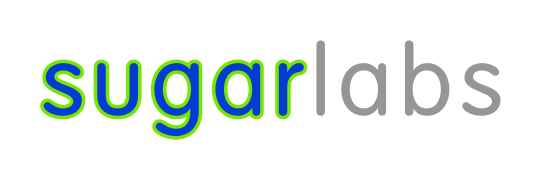
- Name: Abhinav Jha
- Organisation: SugarLabs
- Project: Music Blocks 4 Project Builder Integration
- Mentors: Anindya Kundu and Walter Bender
- Redesign the Bricks Component and the Way the handle interactions
- Redesign the Collision Detection Algorithm
- Create a Workspace component which will have a
- Palette Component
- Canvas Component
- Refactor the prototype code
- Create a wrapper component Project Builder (builder) in musicblocks-v4
- Add utilities to the wrapper component so that the Project Builder component can communicate with the Specification and Syntax Tree APIs of the Programming Framework
The primary goal was to construct the new Project Builder Framework for Music Blocks (v4). This framework serves as the graphical module responsible for managing blocks, enabling the creation of Music Blocks programs. A prototype was available in the musicblocks-v4-builder-framework repository.
In addition, we aimed to establish an architecture that promotes decoupling from the DOM, enhancing the efficiency of interactions. The shift towards a monolithic structure and modular approach was also crucial, aimed at simplifying maintenance and management tasks by division of the project into smaller and simpler components that could work independently without any reliance on other parts of the framework.
Revamped the Brick Component using the Model-View-Controller (MVC) design pattern, leading to a more streamlined and efficient structure. This redesign significantly reduced the size of the Bricks Component while also enabling development that is decoupled from the Document Object Model (DOM). The MVC pattern improved code organization and separation of concerns, enhancing maintainability and facilitating future updates.
Enhanced the collision detection algorithm by implementing a Quadtree-based approach. This advanced technique optimizes collision detection performance within the Music Blocks framework. The Quadtree algorithm efficiently organizes and checks for potential collisions, resulting in improved responsiveness and accuracy when handling block interactions.
Designed and crafted the Palette Component as an integral part of the Music Blocks framework. The Palette Component offers users a curated selection of available blocks, simplifying the process of adding elements to the Canvas and enhancing the overall user experience. It has three sections each of which contains different sets of Blocks ( Now known as Bricks ) which can be used by user by dragging them from palette to canvas.
Developed the Canvas Component, a fundamental element of the Music Blocks framework. The Canvas Component provides users with a dynamic space to arrange and interact with various blocks, enabling the creation of complex programs in an intuitive and visually engaging manner.
Implemented a Higher-Order Component (HOC) that facilitates the attachment of drag handlers to individual brick instances. This HOC streamlines the process of adding drag functionality to bricks, enhancing the overall user interaction within the Music Blocks framework.
All the necessary components have been developed independently, and now it's time to integrate them together.
Even after the program's completion, I intend to continue contributing to the project. Our plan is to gradually incorporate various feature supports from musicblock v3, one by one, and further enhance their capabilities.
Throughout the duration of the GSoC program, I received encouragement from my mentors Anindya Kundu and Walter Bender to create blog posts elucidating the progress and details of my project. Presented below is the compilation of all the blogs I authored during this period:
| Description | Blog Link |
|---|---|
| Journey of my GSOC Project: Exploring Limitless Creativity Music Blocks V4 | Link |
| Journey through GSoC: Highlights of my work in Weeks 5 and 6 | Link |
| Journey through GSOC : A Peek into Week 7 and 8 | Link |
| Journey Through GSOC : Countdown to Finish | Link |
The past three months have been an incredibly enriching learning journey for me, and I'm truly thankful for the knowledge and experience I've gained. My programming skills have shown remarkable improvement during my participation in GSoC. Initially, my familiarity was limited to JavaScript and React. However, over this period, I've delved into the inner workings of the framework.
This project has not only deepened my understanding of React but has also exposed me to the development practices at a larger scale. It offered insights into better software design for enhanced maintainability. I've honed my ability to write clean and organized code, and I've acquired proficiency in crafting robust test cases to ensure the dependability of my codebase. Altogether, GSoC has furnished me with practical, hands-on experience that has significantly elevated my programming prowess. I'm enthusiastic about applying these newly acquired skills in my future undertakings.

Security- Pay attention to security concerns, especially if the Programming Framework API deals with sensitive data or has authentication requirements. Implement secure communication protocols if needed.
her some code You can use
INPUT VALIDATION CODE
#include
#include
int main() {
std::string userInput;
std::cout << "Enter your name: ";
std::cin >> userInput;
}
AVOID BUFFER OVERFLOW
#include
int main() {
std::vector numbers;
}